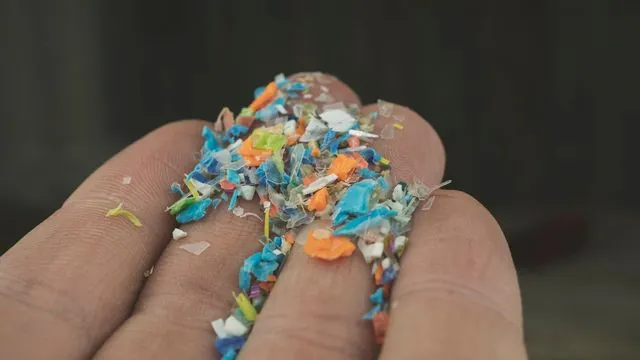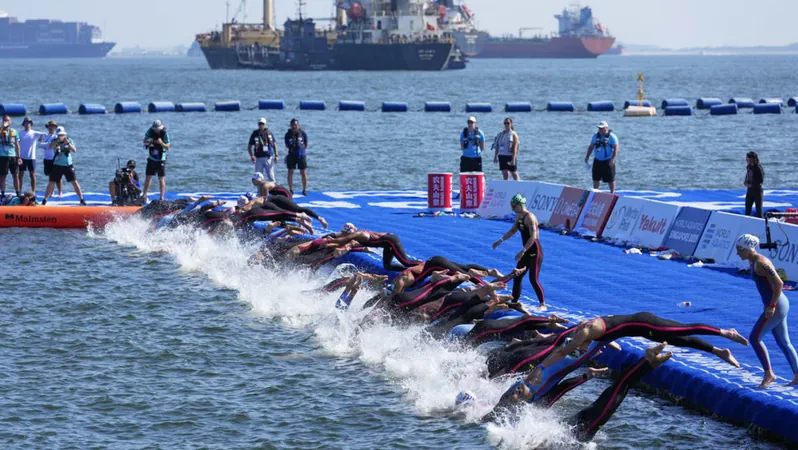
Shocking New Research Shows Nanoplastics Destroy Zooplankton While Ignoring Algal Blooms!
2024-09-27
Author: Arjun
Groundbreaking Study on Aquatic Ecosystems
In a groundbreaking study led by researchers at Lund University in Sweden, alarming insights into the effects of nanoplastics on aquatic ecosystems have been unveiled. These tiny particles, which are generated from the breakdown of larger plastic debris in our rivers and lakes, appear to be wreaking havoc on certain species while leaving others unscathed.
The Scale of Plastic Pollution
Every year, between five and 13 million tonnes of plastic enter the world's oceans, a staggering amount that continues to rise. As this plastic deteriorates, it transforms into micro and nanoparticles, which are so small they cannot be seen without magnification.
Impact on Aquatic Life
The Lund University team has been focusing on how these minute pollutants influence aquatic life, revealing some distressing results. Their research highlights the peril faced by grazing zooplankton, specifically daphnia, which serve as a crucial food source for many fish species. These essential organisms are particularly vulnerable to nanoplastic contamination.
Additionally, phytoplankton diatoms also suffered severe consequences, while cyanobacteria—known for contributing to harmful algal blooms—showed no adverse effects at all.
Expert Insights
Professor Lars-Anders Hansson, an expert in aquatic ecology, commented, "We don’t yet know why some species collapse while others flourish. If nanoplastic concentrations continue to rise, even those species currently resilient might soon struggle." The implications of their findings are enormous, suggesting a potential shift in the aquatic food web that could lead to reduced populations of vital grazing zooplankton and an increase in problematic algae.
Research Methodology
Interestingly, the researchers conducted their experiments in artificial wetlands designed to mimic natural aquatic environments. This approach provides hope that their findings can be generalized to real-world ecosystems, underscoring the broad impact of nanoplastics on food chains and ecosystem processes.
Current Levels of Nanoplastics
These experiments used nanoplastic concentrations that closely resemble current levels found in many water bodies. As Professor Hansson points out, "It's a pressing concern that we need to address. Our study offers critical insights for future policymaking on plastic pollution, even as plastic remains an integral part of modern life."
Call to Action
As the team embarks on further research to unveil the full consequences of these persistent nanoplastics—capable of penetrating cellular membranes—they urge for immediate attention towards this escalating environmental crisis. Dive into the details and understand why action against plastic pollution is more urgent than ever!




 Brasil (PT)
Brasil (PT)
 Canada (EN)
Canada (EN)
 Chile (ES)
Chile (ES)
 Česko (CS)
Česko (CS)
 대한민국 (KO)
대한민국 (KO)
 España (ES)
España (ES)
 France (FR)
France (FR)
 Hong Kong (EN)
Hong Kong (EN)
 Italia (IT)
Italia (IT)
 日本 (JA)
日本 (JA)
 Magyarország (HU)
Magyarország (HU)
 Norge (NO)
Norge (NO)
 Polska (PL)
Polska (PL)
 Schweiz (DE)
Schweiz (DE)
 Singapore (EN)
Singapore (EN)
 Sverige (SV)
Sverige (SV)
 Suomi (FI)
Suomi (FI)
 Türkiye (TR)
Türkiye (TR)
 الإمارات العربية المتحدة (AR)
الإمارات العربية المتحدة (AR)